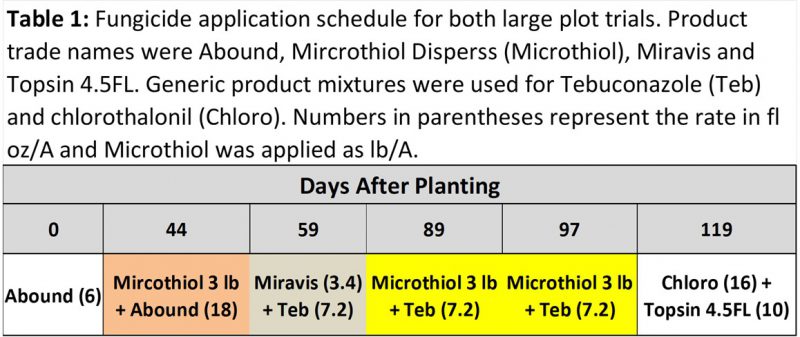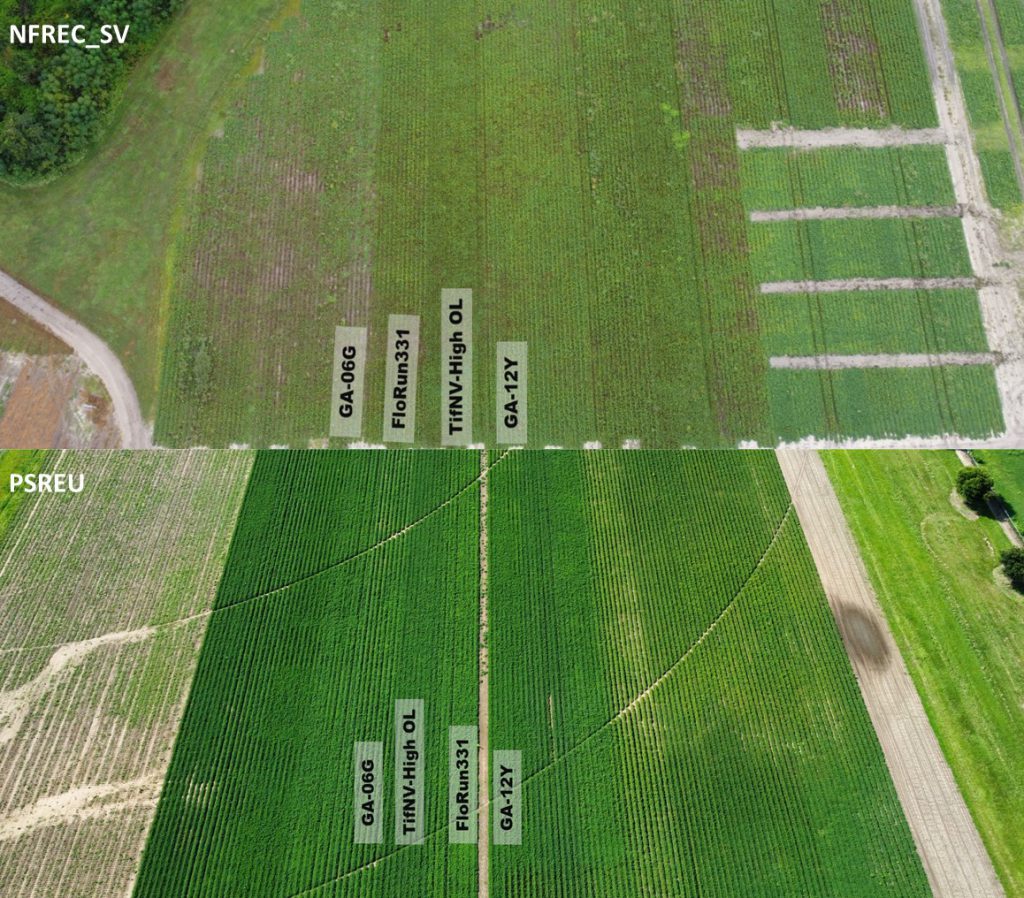
Figure 1: Aerial image of the large plot variety trials at the NFREC-SV in Live Oak, FL and PSREU in Citra, FL with single replications of the four varieties examined labeled.
Nicholas Dufault UF/IFAS Department of Plant Pathology, Gainesville, FL, and Zane Grabau and Chang (Diana) Liu, UF/IFAS Department of Entomology and Nematology, Gainesville, FL
As we head into the 2022 peanut season, many farmers are thinking about how to cut production costs while avoiding any negative effects on yield. This is not an easy task when we consider disease and nematode management. Below are three tips observed in large plot varieties trials conducted at North Florida Research and Education Center (NFREC) in Live Oak, FL and Plant Science Research and Education Unit (PRSEU) in Citra, FL (Figure 1 & 2). These tips can help producers effectively manage disease and nematode issues in their fields while possibly reducing their input costs.
–
Tip 1: Select a resistant variety
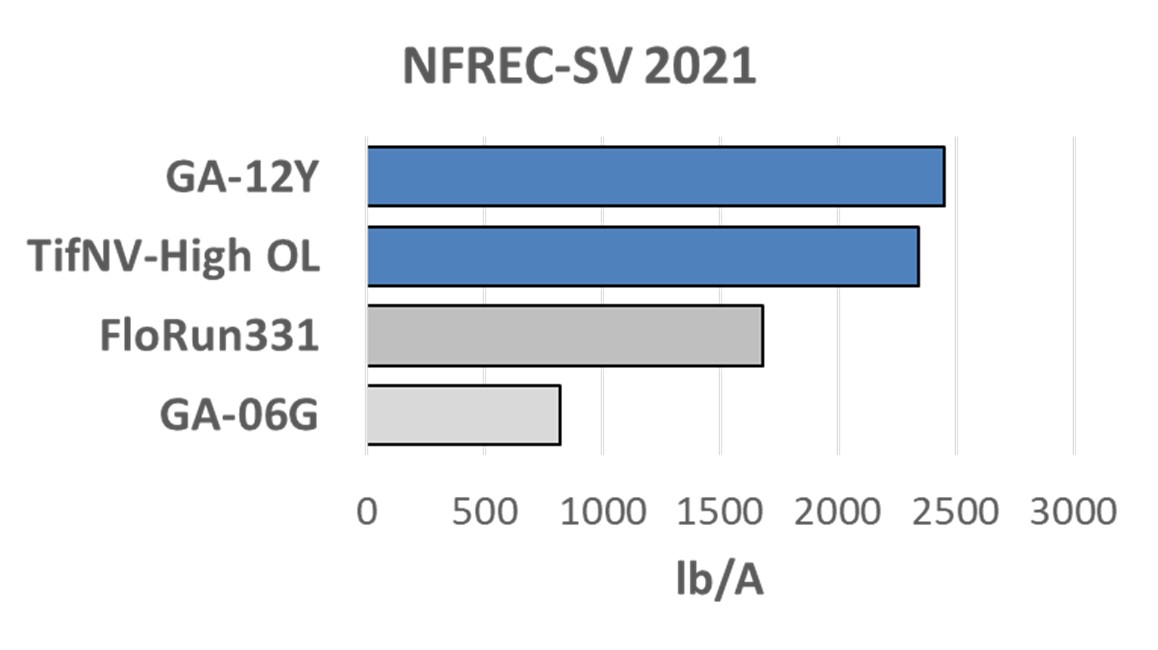
Figure 2: Yield results of the four varieties from the trial at the NFREC-SV. Yield is on the x-axis as pounds per acre (lb/A) with the varieties on the y-axis.
Planting a disease and/or nematode resistant variety can save on input costs related to both nematicides and fungicides (More on nematodes in tip 3). Large plot research at the NFREC showed that varieties with disease (Georgia-12Y; GA-12Y) and nematode (TifNV-High OL; TifNV) resistance could improve yields by three-fold compared to Georgia-06G (GA-06) (Figure 2). It was also observed that the soilborne disease resistance package of FloRun 331 (FR331) improved yields by two-fold compared to GA-06. Unfortunately, variety alone did not make up for the lack of rotation, or the low input fungicide program used in the trial (Table 1). However, changes to the fungicide program will likely not be as extensive for the resistant varieties as it will be for GA-06G. Resistant varieties can also provide more leniency in delayed or missed fungicide applications and may provide some cost saving through reduced seed costs.
–
Tip 2: Understanding soil impact on plant health issues
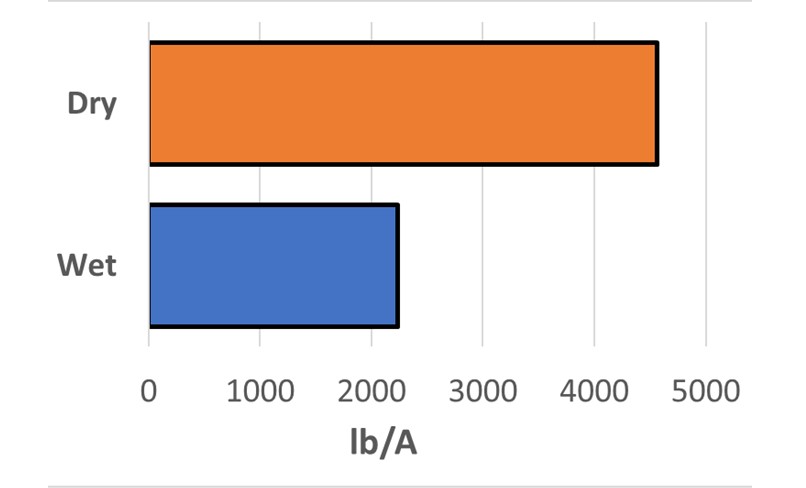
Figure 3: Yield, pounds per acre, results from the PSREU large plot trial comparing the replications in the wet soil/standing water area (wet) to non-water issues (dry).
If a field has an area that is slow to drain or can have pooling water, it is critical to think about their impacts on yields. Root pruning due to excessive water can significantly reduce yields across varieties, which we observed in our 2021 peanut large plot trial at PSREU (Figure 3). The area had pooling of water throughout the season, and it led to a two-fold yield reduction. Foliar disease was also observed to be higher in this area compared to the rest of the field (Figure 4), which could be attributed to the environment and plant stress. These areas can be important inoculum sources for the rest of the field and may require more intensive management programs if the water cannot be drained.
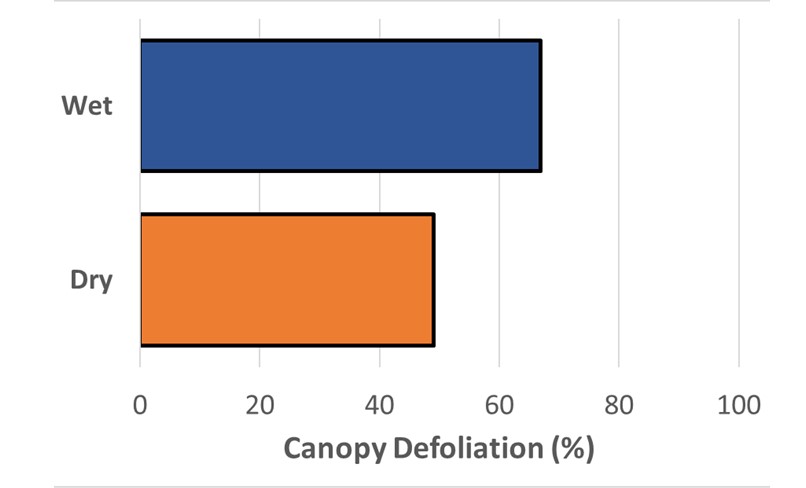
Figure 4: Disease, percent defoliation, results from the PSREU large plot trial comparing the replications in the wet soil/standing water area (wet) to non-water issues (dry).
–
Tip 3: Nematode management must be planned before you put the seed in the ground
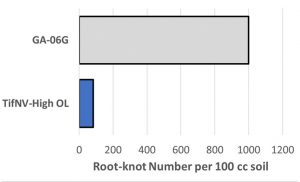
Figure 5: Root-knot nematode number results from the PSREU large plot trial comparing samples from the variety treatments Georgia-06G (GA-06G) and TifNV-High OL.
Once a peanut seed is planted, a farmer becomes a spectator when it comes to nematode management. The one best thing to do for nematodes is use a resistant variety. TifNV, as well as other resistant varieties, continue to lower nematode populations dramatically in the field. It was observed in the 2021 large plot trial that root-knot nematodes were reduced by as much 1,900 nematodes per 100 cc of soil when comparing TifNV to GA-06G (Figure 5). Other integrated nematode management techniques, such as rotation to non-host crop and fumigants or non-fumigant (liquid/granular) nematicides, are useful nematode management too. However, varietal resistance tends to give more consistent results across sights and locations. If you are concerned about nematode issues, especially root-knot nematode, contact your local Extension agent or the nematode assay lab.
–
Takeaways from the trials
One of the biggest things you can do to manage peanut disease and nematodes issues is select a resistant variety. However, there are times when understanding your field conditions (e.g. slow drainage areas and pest presence) can alter your decisions. Understanding your risk is one great way to decide if a resistant variety is right for you. More information on disease risk can be found at peanutRx.org and more information on variety selection can be found in Dr. Tillman’s article: “Plug and Play” Peanut Varieties?
–
- 2025 End-of-Season Florida Peanut Disease Notes - October 24, 2025
- Southern Rust Confirmed in the Florida Panhandle – June 2025 - June 6, 2025
- Stay Ahead of Disease with the Spore Report: A New Tool to Assist with Potato and Watermelon Management - April 11, 2025

